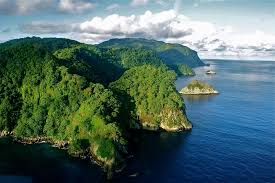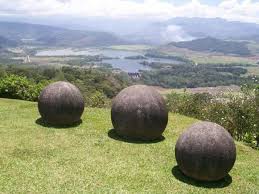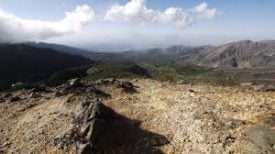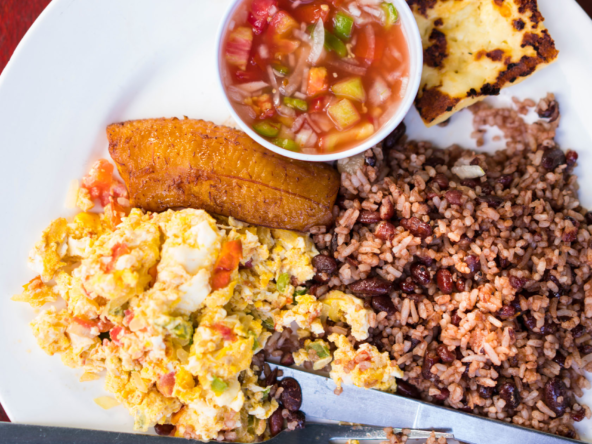Among the amazing things our world has to offer, the World Heritage Sites are the most important and unique masterpieces our cultures and nature give us. I’m sure most of you know what I’m talking about, but just to be clear, all these sites have been selected by the UNESCO on the basis of having cultural, historical, scientific or some other form of significance, and they are legally protected by international treaties.
There are lots of them; on July 2016 1052 sites were listed all over the world and more are in process to be declared by UNESCO.
Now, the one million dollar question: are there any World Heritage Sites in Costa Rica? Well, you won’t believe it but this tiny little piece of land hosts 4 beautiful UNESCO sites; better to take note if you consider visiting this wonderful peaceful country!
TALAMANCA, RESERVA LA AMISTAD
 The geographic location of this exceptional site of Central America – which preserves traces of the glaciations of the Quaternary Era – has facilitated contact between the flora and fauna of North America and South America. Most of the surface of this region, inhabited by four distinct Indian tribes, is covered by tropical rainforests. The conservation of the site is the object of close cooperation between Costa Rica and Panama.
The geographic location of this exceptional site of Central America – which preserves traces of the glaciations of the Quaternary Era – has facilitated contact between the flora and fauna of North America and South America. Most of the surface of this region, inhabited by four distinct Indian tribes, is covered by tropical rainforests. The conservation of the site is the object of close cooperation between Costa Rica and Panama.
PARQUE NACIONAL ISLA DEL COCO
 Located 550 km from the coast of Costa Rica, Cocos Island is the only one in the tropical zone of the Eastern Pacific that has a tropical moist forest. It is an ideal laboratory for the study of biological processes, due to its location in the first point of contact with the countercurrent norecuatorial and its multiple interactions with the surrounding marine ecosystem. The national park’s seabed is famous and many divers consider it the best in the world to observe large pelagic species such as sharks, rays, tunas and dolphins.
Located 550 km from the coast of Costa Rica, Cocos Island is the only one in the tropical zone of the Eastern Pacific that has a tropical moist forest. It is an ideal laboratory for the study of biological processes, due to its location in the first point of contact with the countercurrent norecuatorial and its multiple interactions with the surrounding marine ecosystem. The national park’s seabed is famous and many divers consider it the best in the world to observe large pelagic species such as sharks, rays, tunas and dolphins.
PRECOLUMBIAN CHIEFDOM SETTLEMENTS WITH STONE SPHERES OF THE DIQUìS
 The pre-Columbian spheres are a group of more than five hundred petro-spheres. As a whole, spheres are considered unique in the world by their number, size, perfection, formation of organized schemas and abstraction alien to natural models. Their great value lies in their being made under technological and social conditions considered very difficult at present. However, the indigenous societies that sculpted them did almost perfectly, with very fine finishes in many cases, and sizes ranging from a few centimeters to about 2.6 m in diameter. The spheres were produced and used during a period from 400-500 AD to the Spanish conquest, in a period close to 1000 years.
The pre-Columbian spheres are a group of more than five hundred petro-spheres. As a whole, spheres are considered unique in the world by their number, size, perfection, formation of organized schemas and abstraction alien to natural models. Their great value lies in their being made under technological and social conditions considered very difficult at present. However, the indigenous societies that sculpted them did almost perfectly, with very fine finishes in many cases, and sizes ranging from a few centimeters to about 2.6 m in diameter. The spheres were produced and used during a period from 400-500 AD to the Spanish conquest, in a period close to 1000 years.
ZONA DE CONSERVACION DE GUANACASTE
 Inscribed on the World Heritage List in 1999, this site was subsequently expanded to cover the area of Santa Elena, an additional 15,000 hectares belonging to a private individual. The conservation area has important natural habitats for the preservation of biological diversity. These include the best dry forest habitats in the entire region extending from Central America to northern Mexico, as well as others that are essential for the conservation of rare and endangered animal and plant species. In this site ecological processes of great importance take place, so much in the terrestrial environment as in the coastal and marine.
Inscribed on the World Heritage List in 1999, this site was subsequently expanded to cover the area of Santa Elena, an additional 15,000 hectares belonging to a private individual. The conservation area has important natural habitats for the preservation of biological diversity. These include the best dry forest habitats in the entire region extending from Central America to northern Mexico, as well as others that are essential for the conservation of rare and endangered animal and plant species. In this site ecological processes of great importance take place, so much in the terrestrial environment as in the coastal and marine.




